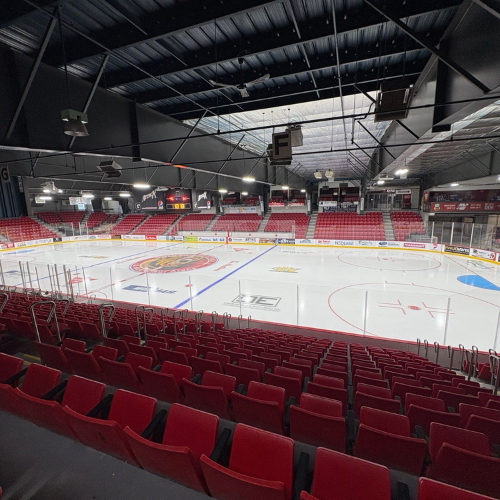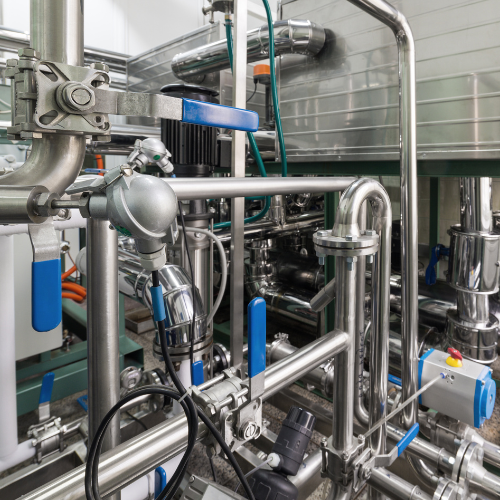With cooling demand expected to triple by 2050 and increase to 30 percent of global electricity consumption, global markets and populations will face increasing pressure to find more efficient, sustainable and long-term cooling solutions. Further, the climate impacts of cooling are immense with both emissions from energy usage and high global warming potential (GWP) refrigerants contributing significantly to the global climate crisis. It is estimated that a coordinated global effort towards energy-efficient cooling could avoid up to 460 billion tonnes of greenhouse gas emissions over the next 40 years. Cooling as a Service (CaaS) is one of the ways we can address the growing cooling demand and the need for more energy efficient solutions. In this three-part series, Queen’s University Engineering grad Julian Burger talks about how this model was conceived, how it works and the potential benefits of using it in North America and beyond.
THE REFRIGERATION INDUSTRY AND CLIMATE CHANGE
The refrigeration industry stands in a unique position with relation to climate change. As global surface temperatures are expected to increase anywhere between 2 and 5 degrees Celsius by 2100, effects such as heat waves and warmer seasons are imminent. With these warming trends, the need for cooling is expected to increase dramatically. According to the International Energy Agency, space cooling is the fastest growing use of energy in buildings and represents 37 percent of expected global electricity demand growth from 2020 to 2050. From the increase in cooling demand accelerated by climate change, the refrigeration industry will play a huge role in adapting to the effects of a warming planet.
On the other hand, the industry itself is a major producer of emissions through consumption of energy and the use of high GWP refrigerants. While higher-efficiency cooling options exist, they often come at a higher capital cost making them less accessible for mainstream adaptation. This positioning as an industry that is both a contributor and a necessary solution for future climate adaptation points to an essential shift towards more sustainable practises.
GOVERNMENTAL TARGETS AND THE ROLE OF REFRIGERATION COMPANIES
As a result of The Paris Agreement in 2016, the Government of Canada made a commitment to reduce its emissions by 30 percent below 2005 levels by 2030. With this commitment, one of the key policies which the federal government has proposed is the Federal Greenhouse Gas Offset System. This offset system is essentially a mechanism by which greenhouse gas offset credits can be created, purchased, or sold between companies to ensure that they are meeting their required emissions reduction. In theory, a company that is unable to cut its emissions beyond what is mandated may purchase offset credits from another company or organization that is sequestering carbon.
The Government of Canada has identified advanced refrigeration systems as one of its priority project types for the development of its federal offset protocol. The protocol describes “replacing or retrofitting refrigeration systems that use GHG-intensive refrigerants” as part of its initial phase of project types to focus on. With this early emphasis placed on the need for lower-carbon refrigeration systems, the role of Canadian companies in achieving Canada’s reduction targets will be crucial. Companies that can aid in this transition towards more sustainable refrigeration practises such as the use of low GWP refrigerants and higher-efficiency systems will be directly responsible for achieving national and global targets through the offset system. As such, companies that are willing and able to make this transition quicker will also be rewarded financially through the proposed offset system. This is where solutions like Cooling as a Service come in to help accelerate investment into the much-needed high efficiency refrigeration systems. CaaS coupled with the use of low GWP refrigerants can help provide the low-cost sustainable cooling solution that will reduce emissions and improve access to high quality refrigeration.
SUSTAINABILITY THROUGH LOW-COST SOLUTIONS
One of the biggest cruxes of sustainability is the perception of an increased cost associated with lower carbon solutions. While this is also currently the case in refrigeration where cheap carbon-intensive options are abundant, high efficiency systems still have the potential to produce immense cost savings over their lifetime. CaaS comes as a prime example of this through its use of innovative financing structures to take away the high upfront capital required for more advanced systems while reaping the life cycle saving of lower energy usages.
The benefits of CaaS for medium to large sized companies were explored in the article Cooling as a Service: Is Canada Ready? In short, by capitalizing on the economies of scale of high-efficiency systems, larger companies can see greater energy savings and in turn, lower overall costs. Examples such as Dr. Oetker, Clover’s and Afrupro have all seen successful CaaS deployments in South Africa in relatively large facilities. While this appears to be the most viable early adaptation scenario of CaaS in Canada, there is also the potential for another use of CaaS to deliver low-cost sustainable refrigeration.
This opportunity to create larger spaces that are accessible to smaller customers will also be essential to Canada’s emission reduction targets. Current low-cost refrigeration solutions are typically lower efficiency and make use of higher GWP refrigerants such as Freon. A ColdHubs shared model could be translated to Canada in which smaller customers such as local farmers, food producers or vendors could all make use of the same facility occupying different spaces. These spaces can also be accommodated for the exact temperature requirements based on the type of product being stored. This system could run low GWP refrigerants and high efficiency systems at an affordable price point that would be accessible to clientele that could not otherwise face the high upfront costs.
One potential downside to the shared space model comes to financers of the project. There are typically higher risks for financers with a smaller customer size as these companies could potentially default or not commit to longer contracts. However, the shared facilities could mitigate this through monthly or even daily payment structures such as with ColdHubs, as long as they were geographically positioned in a high-demand area and defaulting customers could be easily replaced. While this application of CaaS may not be the most market-ready, it is a highly promising second-tier market that will necessitate even more widespread use of low-carbon refrigeration systems and help phase out high polluting cheap systems.
SUMMARY
Overall, the need for low-cost refrigeration systems is a necessity, not only to provide access to smaller clientele, but also to replace cheaper higher-carbon systems that currently dominate the market. As with sustainability in general, making solutions cost-effective is the number one barrier to overcome for mainstream adoption. CaaS is an incredibly promising model which breaks down this financial barrier and offers both businesses and governments a legitimate option at reaching reduction targets in the refrigeration industry. As more and more case studies push the model worldwide, Canadian cooling providers should look at CaaS and other models to incentivize the use of high-efficiency systems and join the global effort of eventually becoming a net-zero industry.
Related Posts

Bayshore Community Center

Comparison of Key Refrigeration System Components: Making the Right Choice for Your Operation

Decarbonization Trends Shaping Industries
|
|

.png?sfvrsn=73f3cd22_0)

